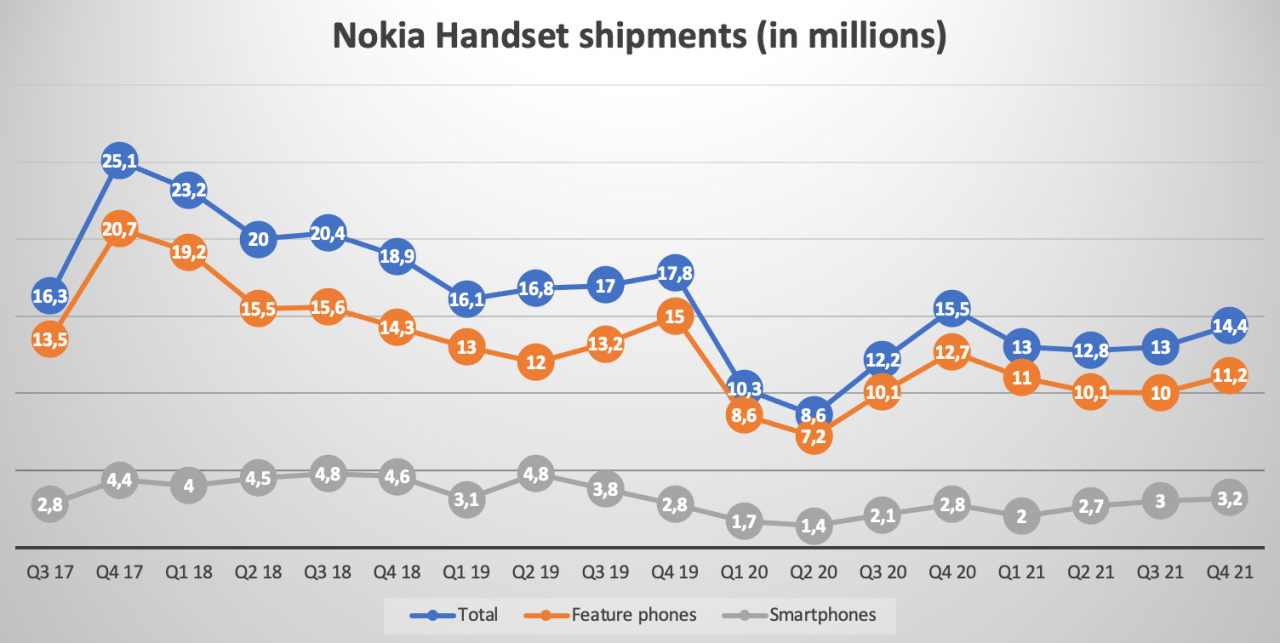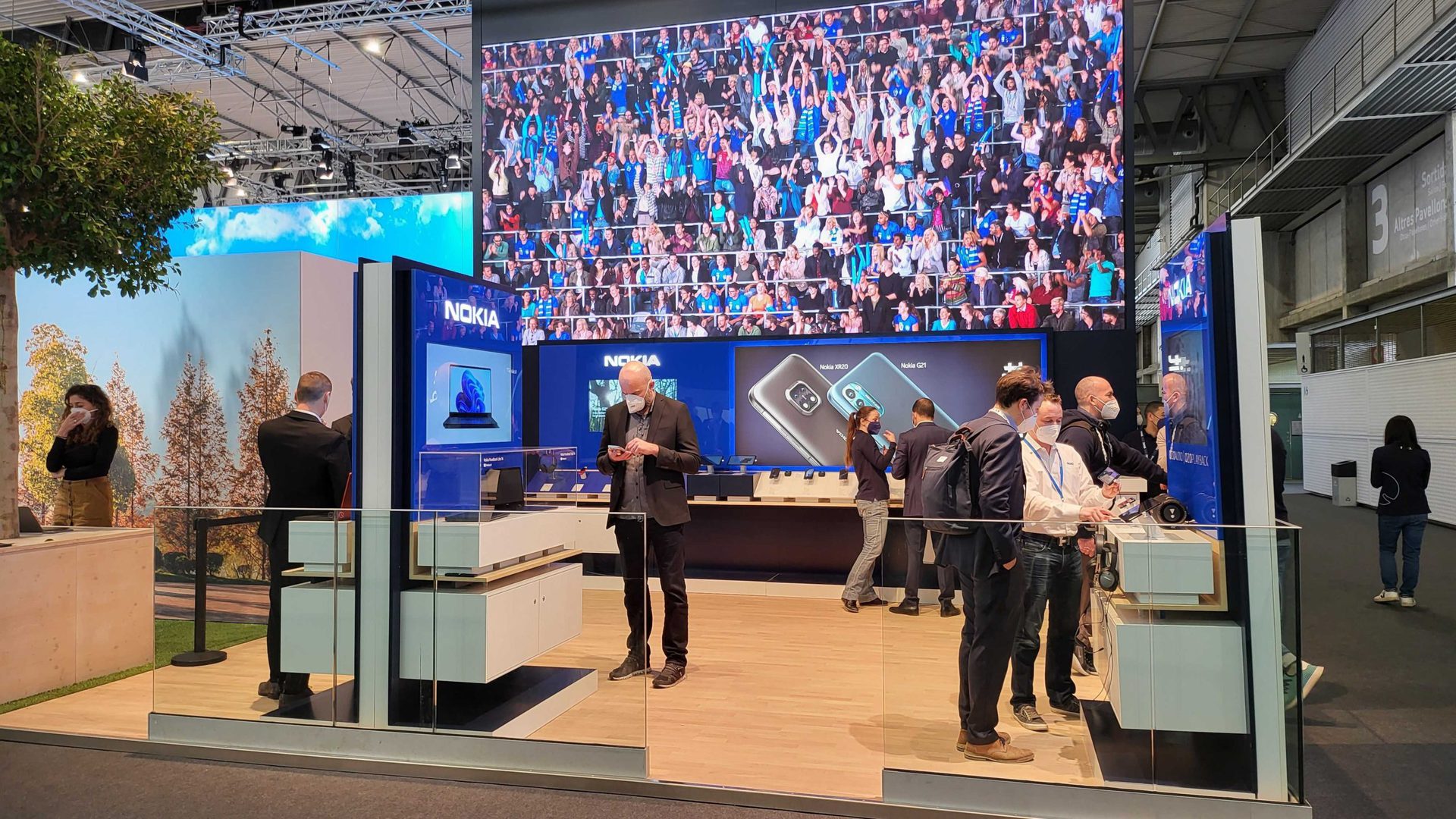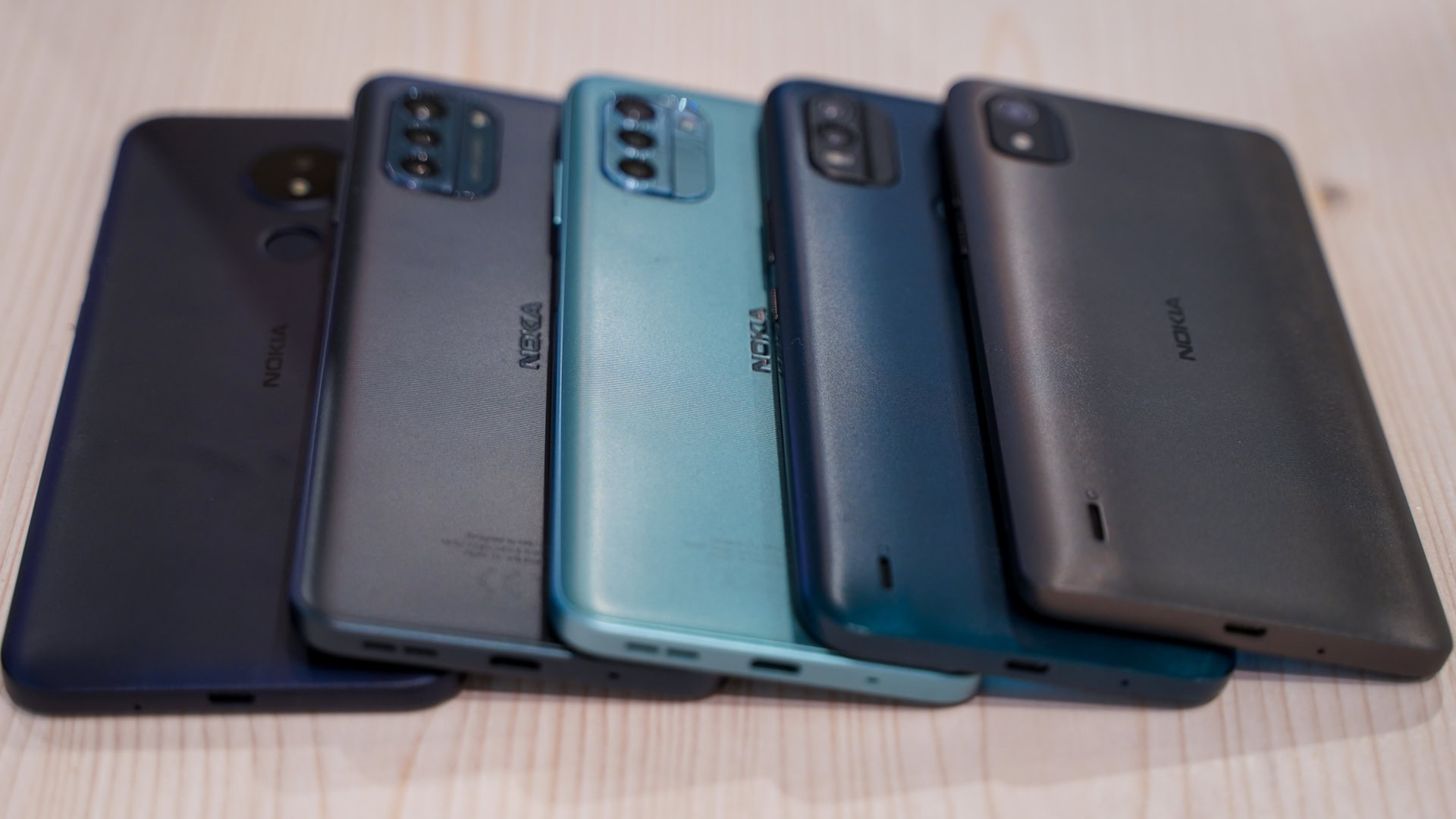HMD admits it’s given up on Nokia flagships for now
Last week’s tech news cycle was filled with announcements from various companies during MWC 2022. But Europe’s most famous mobile brand, Nokia, was barely on anyone’s lips at Europe’s biggest mobile convention. HMD Global, the current maker of Nokia phones, did introduce some new devices, but they were all very, very low-end smartphones. Nothing that can hold a candle to the likes of the Honor Magic 4 Pro and Realme GT 2 Pro. This obviously made us question whether HMD has all but given up on Nokia flagships, and we were able to get a clear — or as clear as it can get — answer from the company.
In our chat with him, Adam Ferguson, HMD’s Head of Product Marketing, Global, told us in no uncertain terms, “Making an $800 phone doesn’t make sense for us at the moment.” This is an outright admission from HMD that it’s no longer interested in chasing the flagship crowd, a suspicion we’ve all had for a long time. As a matter of fact, Adam added that HMD doesn’t “want to get involved in a massive spec war with other players” and would rather “stand for something very different.”
Why HMD stopped making flagships

In its first few years on the mobile scene, HMD Global tried to do everything. Hit every price point, conquer the feature phone segment, innovate on the high-end, maintain fast updates, differentiate by offering a clean Android One experience, and expand across global markets. All with the resources of a small start-up and while trying to revive a dead name that carries a lot of nostalgia and even more baggage. In retrospect, we can all agree that it bit off more than it could chew, and a lot of it came crumbling down around the release of the Nokia 9 Pureview in 2019.
Looking at HMD’s unit shipments and vague financial announcements, it’s clear that the company got a substantial hit in 2019 that carried over to the first half of 2020. The pandemic didn’t help, but things still started picking up. Slowly. Shipments grew, finances became healthier, and HMD has been profitable for six quarters — i.e. since Q3 2020. That’s a point of pride that Adam was happy to reiterate.
Thanks to its change in strategy, HMD has been profitable for six quarters in a row.
Q4 2021 was HMD’s most profitable quarter to date, and according to Strategy Analytics (via NokiaMob), it shipped more smartphones (3.2 million units) than in Q4 2019 (2.8 million units). Smartphone revenue grew 41% year-to-year, from 2020 to 2021. And the company’s entire shipment numbers, including feature phones, is slowly recovering from its massive drop in 2020.
Behind this rise in profitability is a change in strategy that many of us have been critical of for the last few years. Looking from the outside, it seemed that HMD had basically thrown in the towel and was on its way out, which it turns out, is far from the truth.
It’s true that HMD stopped pursuing the high-end market, scaled back on its device launches (especially the upper mid-range), skipped or delayed some updates, slowly faded away from the news cycle, and overall did everything that we, the geek crowd who were champing at the bit for Nokia’s comeback, didn’t want it to do. All in a series of compromises that left many fans disappointed by Nokia — again. But it’s also difficult to denounce that strategy now, knowing how well it worked from a business perspective.
Our critique: 5 years on, HMD’s handling of Nokia is a tale of squandered potential
A strategy centered around the budget market

Rita El Khoury / Android Authority
Nokia’s booth at MWC 2022
Right now, HMD tells us it’s focused on building good feature phones and good entry-level and mid-range smartphones. It wants to make hardware that lasts several years, with multi-day battery life, at an affordable price point. It also aims to be a leader in the US prepaid smartphone market by the end of 2022 (Strategy Analytics). In laying this foundation, it hopes to “earn [its] spurs and then expand in a way that supports the core business,” according to Adam. The spec wars and the fight to cram as many features in a barely-profitable smartphone appear to be off the table, for now.
And if you ask me, that’s the right thing to do. In all honesty, I started preparing for this article from the perspective of a scorned ex-Nokia fan. (For those of you who don’t know, Nokia was the hallmark of my early mobile tech writing career in 2007-2010, and I have “feelings” about it.) I was ready to “flame” HMD for its lack of substantial MWC announcements, its tiny show-floor booth (seriously, it was the size of a living room), and all the “wrong” decisions I thought it was making. But after taking a step back from these charged emotions and looking at the company’s performance and strategy in the last two years, I can’t but agree that most of it makes sense.
Starting from scratch with healthier foundations is better than stubbornly continuing down a losing path.
Letting the Nokia brand revival fizzle out is better than letting it die entirely a second death, and starting from (nearly) scratch with healthier foundations is better than stubbornly continuing down a losing path. I still think that many avoidable mistakes were made on the way: The botched update and buggy software situation could’ve been better handled for one, and the company could’ve been more transparent about its shortcomings and change in strategy. There’s also the more recent matter of the HMD patent ban in Europe, and the unclear current direction taken with/without Android One. A lot of good faith accrued in 2017-2018 has been wasted because of these missteps, and many more.

Eric Zeman / Android Authority
What’s next for HMD and Nokia? Adam says they still have “more to do,” and that’s an understatement. At its peak, HMD was the 8th largest smartphone maker in the world, it’s now down to the 11th position. Back then, it was also part of the weekly conversation on every mobile and Android website. Updates, releases, news, there were interesting things for us to cover and for you to read. Now? Android Authority didn’t even deem the new C21 and C21 Plus worthy of a standalone announcement article; we just mentioned them in our MWC round-up. It’s tough to see the brand that made the Nokia N95 and E71 be relegated to an also-mentioned section where other stars are shining.
Gaining the trust of consumers a third time won’t be an easy feat.
Once it’s ready to reach upward again, HMD has to fight an extremely competitive battle in the higher mid-range and flagship markets. Gaining the trust of consumers a third time won’t be an easy feat. But perhaps the foundations now are steadier than they were in the company’s early 2016 and 2017 days, and if there’s a brand that can win people over thrice, it sure is Nokia.
Or who knows? Maybe we’ll only see low-end and mid-range Nokia smartphones for many years. It’s a money-making strategy so far and you don’t break what’s already working. It would be a shame, for sure, but if these budget smartphones help bring the next billions of people online, then why not? I enjoyed having a Nokia as a first smartphone, I’m sure others would do too.
For all the latest Technology News Click Here
For the latest news and updates, follow us on Google News.
